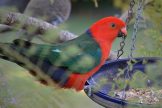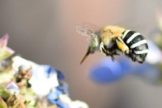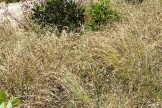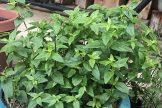
Due to the removal of native trees across Australia for building, logging, agricultural or firewood purposes, millions of natural tree hollows are lost every year. The devastation is particularly apparent in urban environments, where the loss of established trees has seen a dramatic decline in native fauna over the last fifty years due to a lack of appropriate habitat and nesting sites. Even if you live in an area with quite large trees, hollows usually take over 100 years to develop. Thus it may be many years before appropriate nesting / roosting sites are available for many species. It is this lack of habitat that places significant stress on our native animal populations, and can result in once common garden residents becoming rare or non-existent in our suburbs.
Australia boasts an amazing and diverse range of native fauna, including our brightly coloured parrot species, our cheeky sugar gliders, our ever-present possums and our elusive micro-bats.
All these animals, and many more, have two things in common:
· They all live in tree hollows
· They desperately need your help!
We can help!
It is possible for us to make a difference, right here in our own gardens!
Loss of habitat has had a massive impact on heaps of native animals. But, you can supplement and improve the resources available in your area by building your own nest box, or purchasing one made to specifications. This can provide a range of native birds and animals with shelter, and you with hours of joy watching once elusive fauna frolic in your backyard! There are a few things you need to consider when installing a nest box (or two) in your garden.
Check with your local council what native birds and animals can be found in your area. Appropriate locally native plant selection is vital. Speak to one of our nursery staff or check council resources regarding suitable plants for your area.
Provide water for any visitors, but NOT additional food sources. Our native friends love the additional water, but can become sick and dependant on humans if we feed them. Always put the water source out of reach of any hungry domestic pets (especially cats!).
Keep an eye on your cats and dogs; they can cause some real trouble for native animals. Keep cats in at night, and fit them with a bell or two. Cats can actually learn to stalk birds and other native animals without making their bell ring… so fitting multiple bells to your cat’s collar is a handy idea. Keep adding bells until they can’t walk without sounding like Santa Claus barrelling down a chimney.
Remember, wildlife nesting boxes come in lots of different sizes and shapes, many specific for one or two species, so it is important to do a bit of research before installing one. Most councils have comprehensive lists of locally native fauna that you can hope to attract back to your yard. Ask staff at BAAG to help you select the right nestbox for your needs.
Microbats
A number of species of these small, insectivorous bats are found throughout the Manningham / Banyule area. Often referred to as the gardener’s friend, microbats act to keep insect numbers well under control in the home garden. Bat nesting boxes are designed specifically for insectivorous bats, and are undesirable to other pest species (eg: Mynas, Bees), due to the entry located at the bottom of the box. It is also a good idea to affix some Hessian to the top of the box to enable the bats to cling to something while sleeping. Microbat roosting boxes should be located as high up in the tree as possible, and facing either west or east to catch the morning sun.
Parrots
No habitat garden is complete without the squawk and chatter of some beautiful locally native parrots, including the Musk Lorikeet, Rainbow Lorikeet (pictured here) and even the Yellow-Tailed Black Cockatoo. Parrot species feed on the nectar from Eucalypts, and require hollows in which to breed and roost. Unfortunately, parrot nesting boxes can also be attractive to some pest species, such as Mynas, Starlings and feral Honeybees. In order to discourage these pests, it is advised by the Australian Bird Council that nest boxes be placed close together, to allow parrots to compete with both Mynas and Starlings. It is also recommended that a “baffle” be installed over the front of the nest box, allowing our clever parrots entry to the nest box while confusing pest species.
When placing the nest box, remember to provide as much protection from rain, wind and direct sun as possible. It has been found that facing parrot boxes just south of east is suitable. Also, remember that parrots will not provide their own nesting material, so placing suitable material in a box prior to hanging is advised. Decayed wood, shredded bark or untreated wood shavings are perfect for this purpose. Late winter to early spring is the best time to erect a parrot attracting box.
Brushtail Possums
Alright, so not everyone loves this familiar Australian native due to their voracious appetites, taste for our exotic plants, and love of our ceilings. But, the installation of a brushtail possum nest box my actually help you rid your house of these noisy natives! Possums are territorial, so just removing them from your roof without blocking access points will soon see another family of possums dancing the night away above your heads!
The Department of Primary Industries recommends that in order to rid your house of possums access way to the roof should be blocked (with the use of tree collars), a nest box installed away from the house as an alternative den, and, once satisfied that the possums have left your roof, all known entrance points to the roof should be blocked. Possum boxes should be placed at least three meters from the ground, and mounted so that they are leaning slightly forwards. This will assist exit by young and improve drainage. Brushtail possums feed at night, mainly on leaves and fruits, and nest during the day.
Ringtail Possums
Ringtail possums, although not as familiar as Brushtail possums, are extremely common in this area and an important element in locally native food webs. Ringtail possums will generally build their own nest (or “drey”) from bark, leaves and grass, usually in dense undergrowth. They will, however, occasionally utilise an appropriate nest box. Ringtail possum nest boxes have a smaller entry hole than brushtails, but should be mounted in the same fashion. Ringtail possums have developed a real taste for rose buds, so, if this species is sighted in your garden, covering your precious roses or using a possum deterrent may be necessary.
Sugar Gliders
Perhaps one of our most well loved indigenous marsupials, the sugar glider, is rapidly disappearing from our urban areas due to habitat destruction. Sugar gliders are only found in areas where there are hollows for nesting, and tall eucalypts with adjacent wattle species for feeding… and they really do need our help. By installing a nest box in an established Eucalypt on your property, you could be assisting a group of five or more sugar gliders (these guys love to nest in groups). And you’ll be doing your garden a favour too… research has shown that Eucalypt trees that have sugar gliders nesting in them are far healthier than those without gliders due to the amount of insects consumed by these hungry little locals. Sugar glider nest boxes have very small openings, which sugar gliders love… and pest species hate!
Kookaburras
Perhaps the most iconic of all Australian birds, the Kookaburra is a welcome visitor in most suburban backyards. Feeding mainly on insects, worms and crustaceans, Kookaburras utilise hollows for breeding purposes, and the mounting of a nest box suitable for these cheerful natives will give them a helping hand in your community. Kookaburra nest boxes are horizontal in design, and need to have a small opening at the front through which young may excrete waste. Kookaburras can make fascinating studies in the suburban garden, due to their methods of hunting, their shared incubation duties, and the fact that they mate for life. Kookaburras will generally provide their own nesting material, and boxes should be mounted as high as possible in a protected position.
General Information On Nest Boxes
There’s a pest in my box! What should I do?
The biggest concern faced by people erecting nest boxes is the occupation of these artificial hollows by introduced or pest species. These species include Common Mynas, Blackbirds, European Wasps, Honeybees and Sparrows. The occupation of hollows (both natural and artificial) by these pest species is a significant concern for the well-being of our locally native species, and boxes should be monitored routinely for signs of habitation by unwanted species. If a nest box is found to be occupied by a pest of some description, it is best to deter further occupation by removing any eggs and nesting material of the inhabitant, close off the nest box for a period of time, and assess the size of the entrance hole to the box.
Certain species prefer particular entrance holes sizes, and the correct size can help prevent unwanted visitors to the box (70mm prevents Brush-tailed Possums, 45mm prevents Common Mynas, 35-40mm prevents Starlings, 28mm prevents House Sparrows and 26mm prevents Tree Sparrows). The installation of a “baffle” at the front of the box (especially parrot boxes) is advised to discourage entry by pest species. Regular inspection of the box (weekly upon placement) is recommended to avoid unwanted species moving in and displacing locally native wildlife. Honey Bees can be removed from a box by the placement of pest strips inside the box. It is recommended that this be performed at night time, while the bees are inactive. This will kill the bees, and they will subsequently require removal.
To feed or not to feed… that is the question!
This question gets asked time and time again, and there are conflicting schools of thought regarding whether or not people should feed our indigenous fauna. The short answer is NO! Feeding of native fauna is not advised for the following reasons:
- Native fauna can become dependant on food provided by humans, causing them to forget how to hunt and source food for themselves. This can become a real issue when humans move house or go away on holidays, as the “reliable” food source has disappeared. Many native birds and animals used to this repeated feeding will perish in these situations.
- Human food, and even products marketed as suitable for feeding to wildlife often contains dangerous additives, chemicals and preservatives that are harmful to native fauna, and can cause sickness, adverse reactions and even death.
- Repeated feeding of many animals can alter natural behaviours, causing normally passive birds and animals to become highly aggressive, towards each other and towards humans. This is evident in many campgrounds and urban areas, where generally shy wildlife have become aggressive to the point of threatening and injuring humans in their search for food.
- Location of feeding areas within the nesting territory of many birds and animals disrupts their nesting activity, as nest guardians are busy defending their territory from other species encouraged by the food source.
What about water?
Water is recommended, as long as it is out of reach of predators, such as domestic cats and dogs. An available water source will almost guarantee the arrival of a number of bird species, particularly parrots.
What sort of plants will encourage wildlife?
Generally, it is recommended that indigenous plants be chosen for the creation of habitat in your garden. Indigenous (or locally native) plants are those which were, prior to European settlement, common to the area. Locally native plant species are often also present in areas of remnant vegetation that may exist in our communities. By selecting appropriate plant species, you are re-establishing lost habitat, in turn making your community a more desirable place for locally native birds, animals and insects to live. For information of plants indigenous to your area, contact your local council or helpful nursery person for a list of plant species to suit every situation.
How long until someone moves in?
Don’t be surprised if it takes some time for native fauna to occupy your nest box. With the exception of Rosellas (who are inclined to move in straight away), most indigenous fauna species like to “suss out” a hollow before setting up house, so don’t be too upset if it takes a little while!
A locally native animal has moved in! What do I do now?
First and foremost… congratulations. You are helping re-establish habitat for native species that have been displaced by humans and introduced pest species! Now you have to keep them there, and make sure their stay is as comfortable as possible. Avoid the temptation to open the box and look at the inhabitants. This is extremely threatening to our native fauna, especially if they are nesting, and may cause the bird or animal to leave the nest box. A great way to monitor behaviour is to view the inhabitants from a respectful distance, and record their movements. This can be a fascinating endeavour, and information gathered in this manner is often utilised by councils and community groups.
How do I mount my new nest box?
Generally, the majority of species prefer a box with a north-east to south-east aspect. This allows some warmth from the morning sun, while avoiding direct sun in the middle of the day. Nest boxes should be located so as to minimise impact from weather, such a rain, wind, and harsh sunlight. Boxes should be placed as high as possible. This avoids vandalism and disturbance from humans, and minimises the risk posed by domestic and feral animals, such as dogs and cats.
To mount the nest box to a suitable tree, it is recommended that the rear of the box be attached to the tree with galvanised self drilling screws (Type 17 – 14G x 100mm long Hex Head or Bugle Head Batten Screw). This minimises the risk of injury to the tree, and is preferable to straps, wires or chains, which can cause damage to the tree as it grows. Galvanised self drilling screws are also more secure, and provide greater stability, making the environment more comfortable for the inhabitants. If possible, the box should be angled slightly forwards, as this allows young to exit the box more readily. It also aids drainage, keeping the nesting box cleaner and inhabitants happier. If the nest box is removed from the tree, don’t forget to remove the screws.
Can I use a fallen log as a nest box?
NO! Although this ready made roost may seem the ideal nesting box, by removing this log from the ground you could be destroying valuable habitat for some amazing ground dwelling indigenous animals. Skinks, insects, frogs and even some locally native birds and mammals rely on fallen timber for shelter, food and protection, and it is for this reason that fallen timber should be left on the ground.





